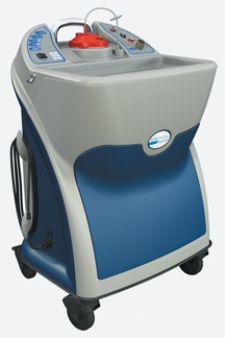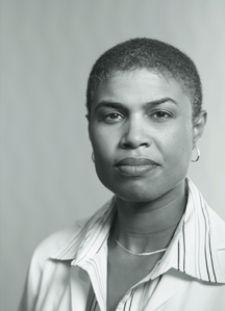
\"Adaptability and compatibility are the keys to staying current with technology and to continuing the best and most compassionate patient care possible,\" Lucia Spears, M.D., Indianapolis Breast Center, PCwww.indybreastcenter.com
Owners and staff of breast imaging centers are continually challenged with being cost effective and time efficient while providing quality patient care. The overhead expenses for maintaining breast imaging centers have continually increased and obtaining reimbursement has become even more challenging. Doing smart business and offering compassionate patient care can be a tricky balancing act and one that requires a resourceful use of equipment and a staff with versatile clinical capabilities and skills.
That’s why radiologists and breast imaging center managers seek out multi-use equipment that can provide cost efficiency during times of budget belt-tightening. The equipment has to be versatile in a variety of clinical settings and easy to use. An example of this is core biopsy capabilities.
“We use the Suros ATEC Sapphire and ATEC Pearl vacuum-assisted core biopsy system in all three imaging modalities,” said Lucia Spears, M.D., medical director of the Indianapolis Breast Center, P.C. (IBC). “This allows us to biopsy any patient with the convenience of one system in any imaging environment and provides a significant cost savings over using three separate systems.”
The Indianapolis Breast Center is an independent, free-standing breast imaging center with a mission of providing quality imaging and diagnostic procedures with compassionate patient care. An on-line imaging flow model is used, allowing patients to receive imaging results for both screening and diagnostic appointments nearly instantaneously and before the patient leaves the facility. Mammography, ultrasound and percutaneous procedures (as time allows) are all often performed in one visit.
“This method of providing as much information as possible during a visit tends to decrease patient anxiety, decrease the time between diagnosis by imaging to tissue diagnosis, and decrease the time to treatment evaluation for malignant diagnoses. Patient satisfaction and care are ultimately improved,” said Dr. Spears.
“We have patients return to see us from across the state and the country. However, we always have to be cost conscious,” Dr. Spears added. “Our center survives and thrives by our work. With reimbursement challenges, it is important for us to have a fast biopsy system that allows us to see more patients. As an independent imaging center, this is our only source of funding.”
Radiologists at the IBC have seen a moderate increase in the need to provide core biopsies over the past few years. Part of this increase has occurred with improved detection using mammography and ultrasound, but the use of breast MRI has also brought about greater sensitivity in the detection of lesions. Breast MRI is becoming a regular step of evaluation for extent of disease and surgical planning for newly diagnosed cancer patients and for the evaluation of high-risk patients with dense tissue.
“We are finding more and more cases of multifocal and multicentric cases of cancer with our dedicated breast MRI system, which aren’t visible with mammography and initial ultrasound,” noted Dr. Spears. “The detection of larger, multiple and/or bilateral malignancies can significantly change a patient’s staging, as well as surgical, medical, oncological, and radiation approach to treatments. Early detection has always been the key to better outcomes for patients. Therefore, histological diagnosis is required with the detection of additional suspicious lesions that were previously unknown.”
It is very common for patients to present with more than one suspicious lesion and it is equally as common for more than one imaging modality to be required for the core biopsies. Dr. Spears said it is a necessity to have core biopsy equipment and tissue markers that can be used with all three imaging modalities. “The Suros system easily gives us this capability. It is very mobile, easy to set up, easy to use for radiologists and technologists, accurate, and comfortable for the patient. We can’t afford to have a separate piece of equipment for each imaging modality and we don’t have the space.”
Percutaneous core biopsy methods of obtaining tissue for histologic diagnosis has become an integral tool of breast imaging centers, saving the patient and healthcare system time and money. The core biopsy can be performed in an office setting and may prevent a patient from undergoing a more invasive and more expensive open surgical procedure if the diagnosis is benign. A malignant diagnosis by core biopsy can provide useful information in surgical planning, possibly requiring the patient to undergo only one surgical procedure rather than two.
New and improving imaging systems are likely to force an increased need for diagnostic core biopsy with its highly sensitive technology that allows for the detection and diagnosis of more lesions and cancers of the breast than ever before. Radiologists not only have to be skilled in the evaluation of images from each modality, but they also have to determine the best biopsy approach(es) to provide accurate tissue diagnosis after finding an area of suspicion and be able to procure that tissue by percutaneous biopsy with each of those imaging modalities when indicated.
The biopsy system also needs to be adaptable to these imaging advances. Dr. Spears notes that the ATEC system is able to handle the expected increase in biopsy volume and they purchased the system believing it will be easily compatible with emerging imaging modalities.
“Adaptability and compatibility is the key to staying current with technology and to continuing the best and most compassionate patient care possible,” Dr. Spears said. “You have to make good business decisions while remaining true to your patients and your mission. And that means providing the best technology with optimal cost-efficient results.”


